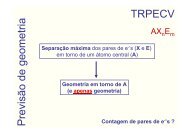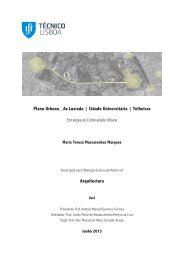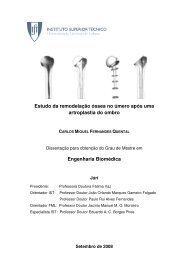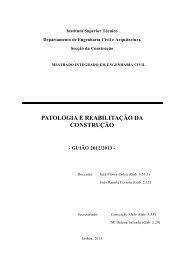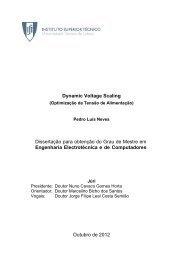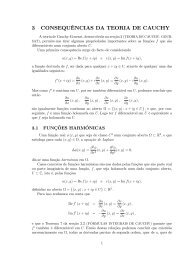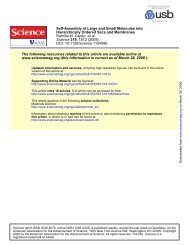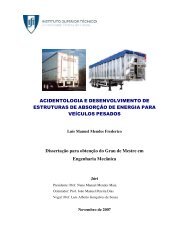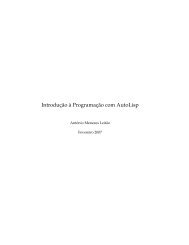dissertacao.pdf
dissertacao.pdf
dissertacao.pdf
You also want an ePaper? Increase the reach of your titles
YUMPU automatically turns print PDFs into web optimized ePapers that Google loves.
1.6 RSA Definition<br />
We are now in conditions to present the mathematical definition of RSA. We<br />
will consider an RSA cryptosystem to be a tuple < N,M,C,K,E,D > where:<br />
N = pq - the public modulus, the product of two different prime numbers<br />
p, q.<br />
M - the set of plain text. M = ZN.<br />
C - the set of cypher texts. C = ZN.<br />
K - is a tuple < p, q, e, d > where (d, φ(N)) = 1 and ed ∼ = 1 (mod φ(N))<br />
Kr =< e, N > is the public key<br />
Kp =< p, q, d, N > is the private key<br />
E - the encryption function: E : M → C, c = E(m|Kr) ∼ = m e (mod N)<br />
D - the decryption function: D : C → M, m = E(c|Kp) ∼ = c d (mod N)<br />
e and d are called public and private exponent respectively. The expo-<br />
nents satisfy the equation ed − 1 = kφ(N), which is therefore called the key<br />
equation. It is also possible to define the exponents modulo λ(N). Since this<br />
is a multiple of φ(N) the rest of the procedures described in this section are the<br />
same.<br />
The transmission of messages is as follows: suppose Alice wishes to send a<br />
plain text message m ∈ M to Bob. Alice encrypts m using Bob’s public key<br />
< e, N > and obtains<br />
c ∼ = m e<br />
(mod N) (18)<br />
Then, she sends c through an open channel to Bob. Now Bob gets c and decrypts<br />
it using his private key < d, N >:<br />
m ′ ∼ = c d ∼ = m ed ∼ = m (mod N) (19)<br />
The last equality is a result of Euler’s Theorem:<br />
m ed ∼ = m 1+kφ(N) ∼ = m(m φ(N) ) k ∼ = m1 k ∼ = m (mod N) (20)<br />
The cryptosystem is easy to implement, which is one of the reasons why it<br />
is so popular.<br />
14



